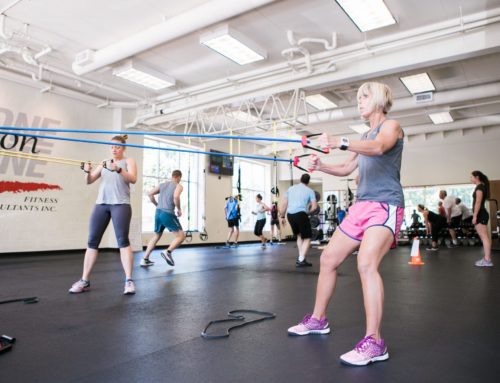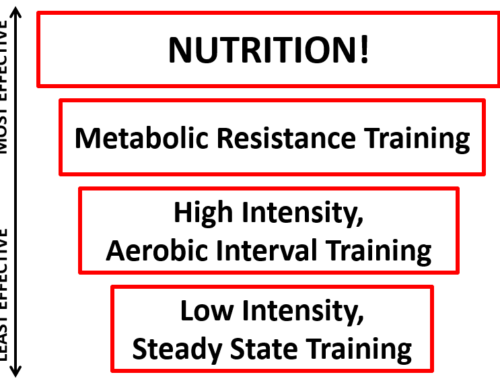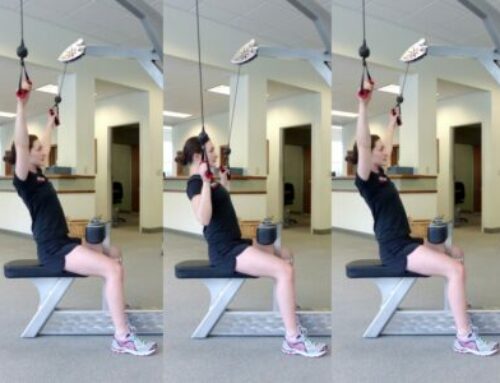Human movement is remarkably complex. With hundreds of muscles and joints, our bodies can bend, twist, lift, and turn in seemingly limitless ways. Most human movements fall into one of four categories: locomotion, raising and lowering center of mass, pushing or pulling, and rotating. These categories are known as the four pillars of human movement, and they are part of every One on One client’s exercise program. Whether you hope to improve your athletic performance or increase the ease of daily living, the four pillars are essential parts of a healthy, fit, and functional life.
Locomotion
Locomotion is simply movement from one place to another. To varying degrees, locomotion is part of all of our lives, so it is important to incorporate in our training. Tight muscles, poor movement patterns, orthopedic injuries, and our personal environment can all affect how we locomote. Many of our programs at One on One help to restore tissue quality, correct faulty movement patterns, and minimize the impact of previous orthopedic injuries, thereby improving our ability to locomote.
In addition, activities like training on the agility ladder, performing lane drills or any other open space exercises can give us a chance to improve our locomotion skills. Individual practice in locomotion will look different for everyone – for some it may focus on improving their ability to walk, while for others it may focus on improving their speed, agility, and athleticism.
Raising and Lowering the Body’s Center of Mass
Raising and lowering the body’s center of mass involves level changes, characterized as movements of the trunk, lower extremities, or a combination of the two that result in our center of mass either raising or lowering. We raise and lower our bodies quite a bit throughout the day. Getting into a car, picking something up from the floor, and climbing out of bed are examples we can all relate to. It is important to perform exercises like squats, deadlifts, and lunges to train the muscles involved. Remember, technique is key both inside and outside of the gym. Strive to maintain a neutral spine and use your legs when bending over or squatting in order to keep your back healthy and pain free.
Pushing and Pulling
Pushing and pulling movements center more on our upper body. Pulling is any movement that brings our arms towards the body, while pushing is any movement that takes our arms away from the body. Opening or closing a heavy door, lifting a trash bag out of the garbage can, or placing a box high on a shelf are examples of pushing and pulling in everyday life. It is important to perform exercises such as rows, pull-downs, push-ups, and overhead presses to train the key muscles involved with pushing and pulling. As always, performing these exercises with correct technique improves your movement efficiency and translates into having the ability to push and pull safely in daily life.
Rotation
Rotational movements involve changes in direction and the production of rotational torque. The majority of human movement occurs in the transverse (rotational) plane, and much of our musculature is oriented in a diagonal or horizontal fashion to facilitate this motion. Therefore, it only makes sense that much of our training should focus on rotational skills. Performing medicine ball or tubing rotations, wood chops, and cable chops/lifts are all great ways to incorporate rotation into your program. These exercises can be adjusted to individual levels of ability and different fitness concerns, and they are foundational to daily movement skills. Walking, running, throwing, and swinging a golf club all have strong rotational components, so your rotational training will continue helping you move once you leave the gym.
For this week and moving forward, consider how each of the four pillars of human movement impacts your life. Talk with your trainer, and identify any areas where you may need improvement. Focusing on the four pillars can help you achieve balance with your training and have fun while doing so!
Copyright 2011 Fitness Consultants Inc. All rights reserved.
